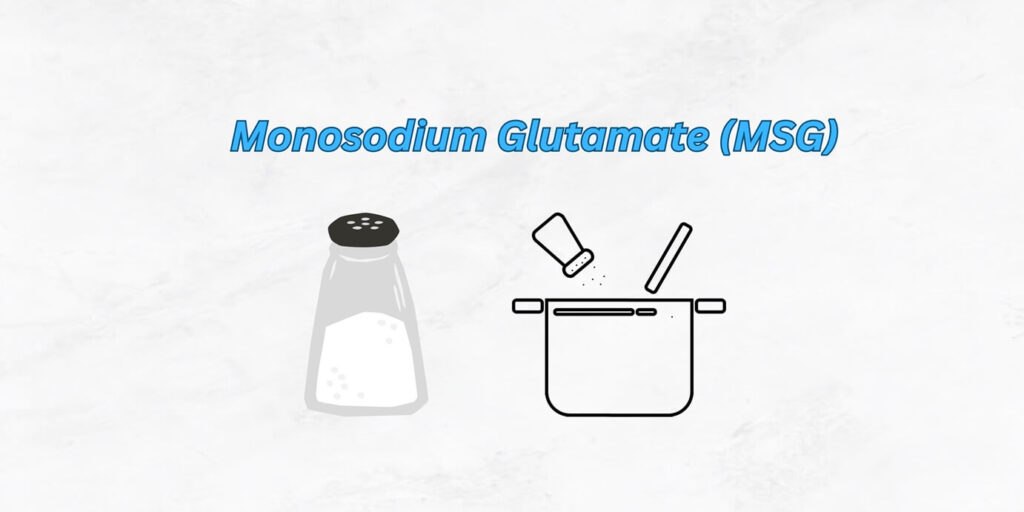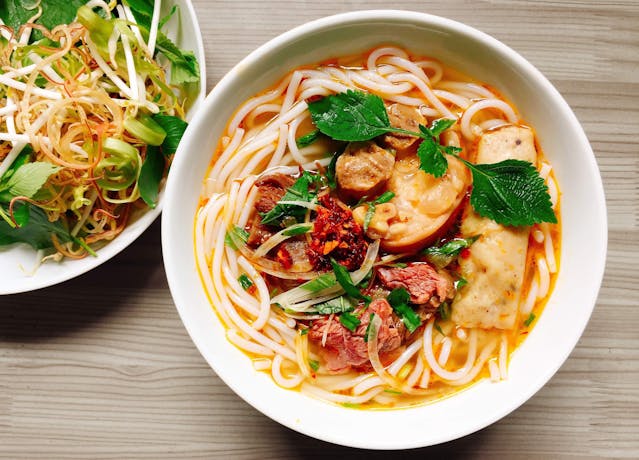You may hear of “Chinese restaurant syndrome” linked to the Chinese food ingredient monosodium glutamate, and you may think of what is monosodium glutamate. It is also known as MSG. It was seen as a harmful ingredient in the 1960s.
We enjoy eating Chinese food a lot. Chinese foods contain monosodium glutamate (MSG) as the main ingredient. MSG is commonly found in processed foods in the West and is popular in Asian cooking. People’s typical daily intake is estimated to be between 0.3 and 1.0 grams.
A sensitive person after consuming food containing MSG may experience headaches, giddiness, sweating, abdominal pain, and urticaria. If left untreated, a severe reaction to MSG can be fatal. It is normal for significant symptoms to appear slowly. In this article, you will find all the answers related to monosodium glutamate.
What is Monosodium Glutamate?
The sodium salt of glutamic acid is called monosodium glutamate (MSG), or sodium glutamate. Some foods, such as cheese and tomatoes, naturally contain MSG in the form of glutamic acid. As naturally occurring glutamate enhances the meaty, savory flavour of dishes like stews and meat soups, MSG is utilized in cooking as a flavour enhancer with a savory taste.

Who invented monosodium glutamate?
MSG was created in Japan, even though it is closely associated with Chinese cuisine and has been reported to be the root of Chinese Restaurant Syndrome.
Professor Kikunae Ikeda, a curious scientist, developed it in 1908 in an attempt to mimic the savory taste in his wife’s dashi broth.
The main step in creating monososium glutamate was isolating the amino acid called glutamate. Glutamate is a component of the dried konbu (kelp)- a dark brown seaweed that his wife used to make the soup. Ikeda discovered that glutamate is responsible for the fifth taste sense, which he called “umami” (a common Japanese word that roughly translates to “savory”).
How monosodium glutamate is made?
It was initially made by hydrolyzing gluten to extract wheat protein. After that, in the 1930s, soy beans were used to extract MSG. In the 1960s production of MSG shifted to the bacterial fermentation of sugar cane and other similar crops. The process is similar the way cheese, yogurt and wine are produced.
What is the chemical formula for monosodium glutamate?
Monosodium glutamate appears in a crystalline powder which is white or off-white in colour. Glutamic acid and sodium are the main compounds in the production.
Its chemical formula is C5H8NNaO4 and it molecular weight is 169.11 g/mol.
E or INS number for Monosodium L-glutamate (MSG) is E621.
People always asks is monosodium glutamate and ajinomoto same? So, answer is yes. Ajinomoto is the name of the Japanese company that produces monosodium glutamate (MSG). The product gained a lot of popularity under the brand name Ajinomoto, and the business eventually protected its exclusivity by trademarking it. Ajinomoto and Monosodium glutamate (MSG) are the same thing.

Why is monosodium glutamate added to food?
A lot of foods have monosodium glutamate (MSG) added to them to enhance flavour. It imparts the umami flavour to food.
If you wonder where is monosodium glutamate found and thinking have you ever notice it in your food, you know the answer because you have consumed the processed foods, canned foods, soups, and fast food in which MSG is found.
The Food and Drug Administration (FDA) recognizes MSG as safe to consume, although there are still a lot of questions and differences of opinion regarding the ingredient’s potential health risks. As a result, the FDA mandates that food labels list the ingredient.
Monosodium glutamate uses:
Many everyday food items found in grocery stores and neighbourhood eateries today contain MSG. This component, which is present in umami enhancers, works to enhance the flavour of a variety of foods, such as soups, noodles, and snacks.
Food rich in monosodium glutamate are:
- Fast food: Monosodium glutamate is known for its excessive use in Chinese dishes and other fast food items like fried chicken.
- Chips: MSG is added to a variety of different types of chips and related snacks to bring out their unique salty, savory flavours.
- Soups: The grocery store’s soup section is another area where MSG can be found. Soups flavour and saltiness are improved by the addition of monosodium glutamate.
- Condiments and Dressings: MSG has been found to enhance the flavour of certain condiments, including ketchup, mayonnaise, barbecue sauce, soy sauce, mustard, and salad dressings.
- Seasonings: Given that MSG enhances flavour, it is not surprising that many seasonings that customers use on meats and in stews contain this ingredient.

Monosodium glutamate side effects
When Chinese-American physician Robert Ho Man Kwok submitted a letter to the New England Journal of Medicine in the 1960s claiming that eating Chinese food had made him sick, MSG gained a bad reputation.
He wrote that he thought drinking alcohol, eating salt, or using MSG in his food might have caused his symptoms. Due to biases against Chinese immigrants and their food that were likely prevalent at the time, this led to a lot of false information being spread about MSG.
Kwok’s symptoms were first classified as the “Chinese restaurant syndrome” (now known as the “MSG symptom complex” or MSC) as a result of the letter.
Later, a number of studies confirmed MSG’s negative reputation by showing how harmful the ingredient was. Still, recent data raises doubt on the validity of earlier studies for a number of reasons.
There are some minor health problems associated with MSG that you should be aware of, but further research is required to confirm any direct links.
Although further research is required in these areas, some studies have suggested that MSG may be linked to a number of illnesses, such as obesity, central nervous system disorders, and reproductive issues.
Some people have reported experiencing the following symptoms after taking MSG:
- Headache
- Sweating or flushing
- Numbness
- Chest pain
- Hives
- Swelling of the throat
- Nausea
- Weakness or fatigue
- Heart palpitations
If you wish to stay away from any possible negative effects, it’s important to remember what foods contain monosodium glutamate, such as chips and fast food and this type of food can contribute to obesity, heart disease, diabetes, and other health hazards when often consumed and aren’t always a part of a balanced diet. To drastically reduce the amount of MSG in your diet, stay away from these bad items.
Currently, MSG is generally recognized as safe (GRAS) by health authorities such as the Food and Drug Administration (FDA), the European Food Safety Association (EFSA), and the Joint FAO/WHO Expert Committee on Food Additives (JECFA).
An acceptable daily intake (ADI) of 14 mg per pound (30 mg per kilogram) of body weight per day has also been established. This is a significant amount over what you would normally consume on a regular basis.
Conclusion
Monosodium glutamate can be found in many foods naturally, such as certain cheeses, meats, and vegetables and added in certain processed and fast-food items as a flavouring agent. Modern research has disproved the myth that MSG is harmful, even though it was thought to be so in the 1960s and suggests that moderate consumption of the component is harmless. However, you shouldn’t take it in excessively high amounts or if you have negative side effects.
Check out my other blog for more information on Food Flavours.